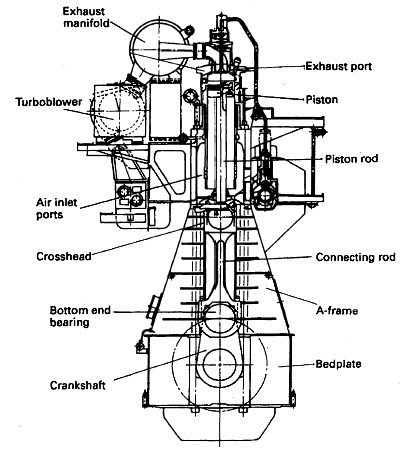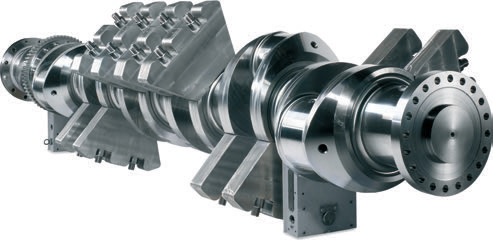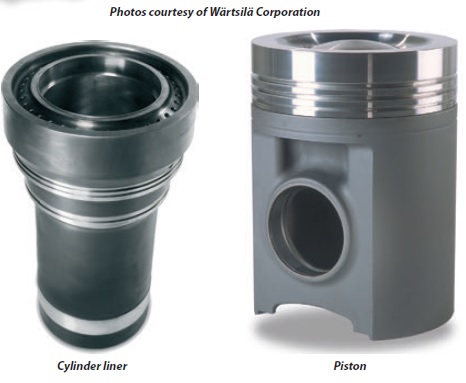
Four-stroke Cycle Marine Diesel Engine
The four-stroke cycle is completed in four strokes of the piston, or two
revolutions of the crankshaft. In order to operate this cycle the engine
requires a mechanism to open and close the inlet and exhaust valves.
A cross-section of a four-stroke cycle engine is shown diagram. The engine is made up of a piston which moves up and down in a cylinder which is covered at the top by a cylinder head. The fuel injector, through which fuel enters the cylinder, is located in the cylinder head. The inlet and exhaust valves are also housed in the cylinder head and held shut by springs. The piston is joined to the connecting rod by a gudgeon pin.
A cross-section of a four-stroke cycle engine is shown diagram. The engine is made up of a piston which moves up and down in a cylinder which is covered at the top by a cylinder head. The fuel injector, through which fuel enters the cylinder, is located in the cylinder head. The inlet and exhaust valves are also housed in the cylinder head and held shut by springs. The piston is joined to the connecting rod by a gudgeon pin.






